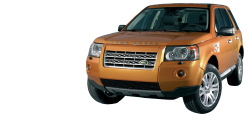
|
|
| Home · FAQ · New Posts · My Posts · PMs · Search · Members · Members Map · Calendar · Profile · Donate · Register · Log In |
 | Home > Maintenance & Modifications > Differential modification |
 
|
|
|
| Freely2 Member Since: 29 Jul 2017 Location: Gold Coast Posts: 41 
|
Do you mean wider bearings as modified by Austen or did later FL2s come with a wider bearing? I know that the older FL2s has substandard bearings made of a softer metal but I wasn’t aware that the bearing size was changed by Land Rover later on? If so, when was this change made? Thank you for this information! |
||
|
| Boxbrownie Member Since: 17 Mar 2019 Location: Looe Posts: 2053  
|
I believe it was an issue with the way the original Haldex worked as it transferred sudden high torque to the diff (and especially the nose bearing) the later FL2 came with the later Haldex (Gen4 I think?) which could be programmed to more progressively transfer torque to the diff/drivetrain. This is my understanding from reading the stuff on here. Regards David Lovely i6 has now gone, but not me...... Please let me know if anything in my post offends you, as I may wish to offend you again...... |
||
|
| tenet Member Since: 23 Jul 2009 Location: cotswolds Posts: 1081  
|
I have a my 15 and my bearing went at c30,000 but thankfully done under warranty. My understanding is that LR increased the bearing size post 2013 but somehow still ended up with some manufactured from softer metal, ex India I believe. Others may have a greater knowledge than me. MY 09 GS manual in Lago Grey, Wood Co arm rest and side bumper strips - now sold. MY 15 SD4 SE Auto Orkney Grey with colour coded Bumper Door Mouldings |
||
|
| MRRover75 Member Since: 13 Jan 2017 Location: Sandnes Posts: 342  
|
" My understanding is that LR increased the bearing size post 2013 but somehow still ended up with some manufactured from softer metal, ex India I believe. Others may have a greater knowledge than me. "
|
||
|
| Freely2 Member Since: 29 Jul 2017 Location: Gold Coast Posts: 41 
|
I’m starting to get the feeling that no one is quite sure what the cause of the bearing failures are?! So far I have seen the following causes given:
|
||
|
| MRRover75 Member Since: 13 Jan 2017 Location: Sandnes Posts: 342  
|
You are basically correct in all your statements. I have the same gut feeling as you, that there are no definitive answer.
|
||
|
| dorsetfreelander Member Since: 20 Jul 2013 Location: Dorset Posts: 4363  
|
Is it only the FL2 in the LR stable that has the rear diff bearing problem? Never heard of it with an FL1. 3 x FL1 2 manual + 1 auto
|
||
|
| Badger51 Member Since: 01 Mar 2014 Location: Korora Posts: 1016 
|
The early FL1 did have diff issues if my memory serves me correctly, the facelift model had a different model of diff as well.
|
||
|
| IanMetro Member Since: 11 Sep 2017 Location: Somerset BS21 Posts: 3461  
|
Many car makers use the Haldex unit.
|
||
|
| Boxbrownie Member Since: 17 Mar 2019 Location: Looe Posts: 2053  
|
The Haldex on our Q3 was indeed a service item, I believe at 30K was recommended by our main dealer, I think officially it may have been a bit more but had some leeway ie 30>40K miles. Regards
|
||
|
| dorsetfreelander Member Since: 20 Jul 2013 Location: Dorset Posts: 4363  
|
Yes the early (Rover) ones used to have weird tyre wear on the rears which became noisy due to castellation caused by the rear diff ratio being too different to the front. When BMW took over they reduced the difference between the ratios and it solved the problem. I don't recall hearing about any other rear diff issues and I had three of them, all reliable apart from a head gasket on the early one. 3 x FL1 2 manual + 1 auto 5 x FL2 4 manual + 1 auto Now Discovery Sport P250 MHEV SE |
||
|
| RogB Member Since: 16 Dec 2014 Location: Mansfield Posts: 3886  
|
FL1 were a different set up ot the FL2 but still followed the same principals. Weak points were the IRD (PTU on FL2), Viscous coupler (Haldex on FL2) and the rear diff (urrrm rear diff on FL2 |
||
|
| jules Member Since: 13 Dec 2007 Location: The Wilds of Warwickshire Posts: 5506  
|
Also brinelling - possibly due to the way the diffs are stored or handled https://en.wikipedia.org/wiki/Brinelling Jules |
||
|
 
|
|
| All times are GMT + 1 Hour |
< Previous Topic | Next Topic > |
Posting Rules
|
Site Copyright © 2006-2025 Futuranet Ltd & Martin Lewis
![]()

